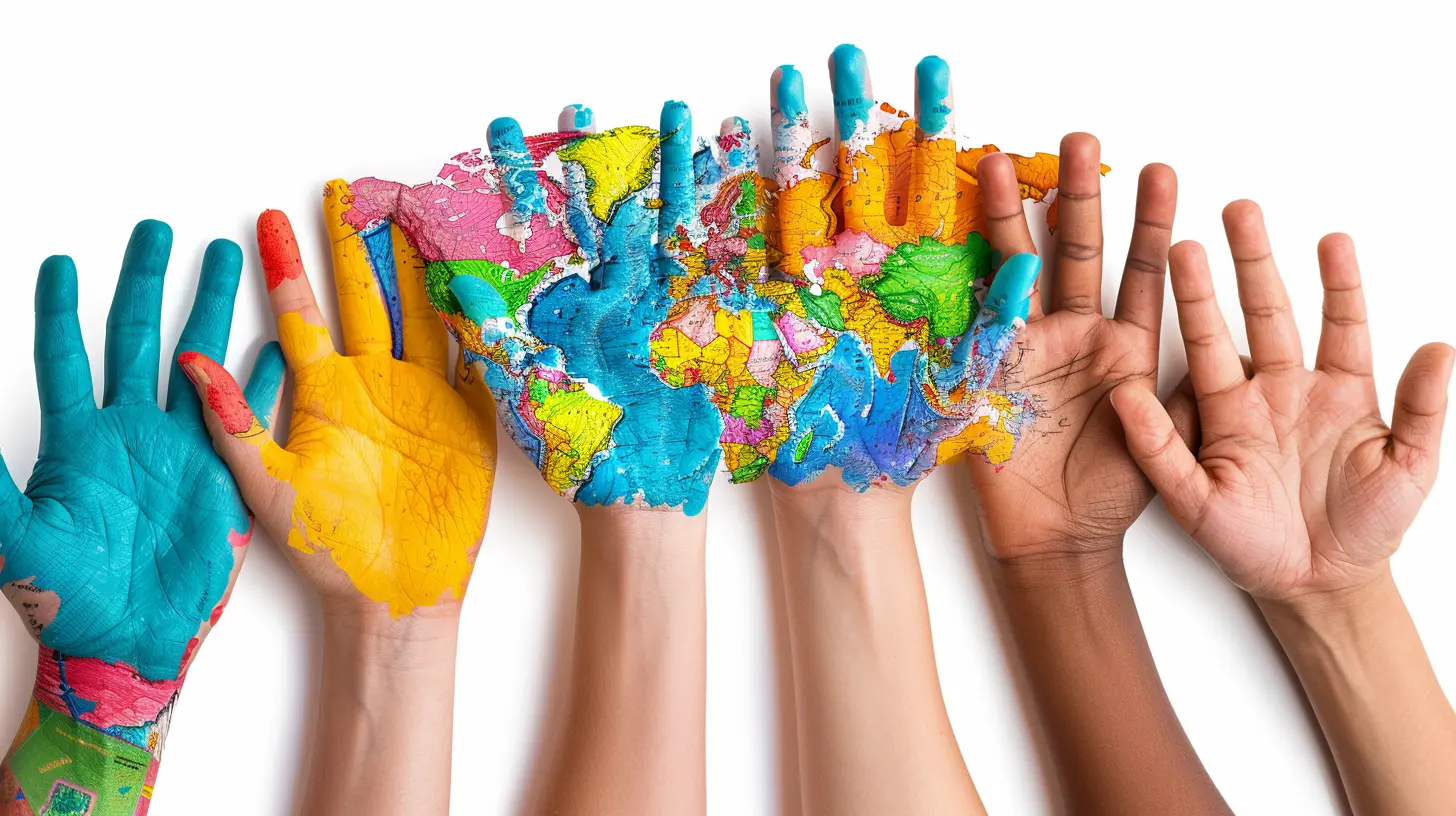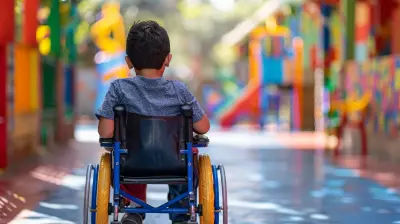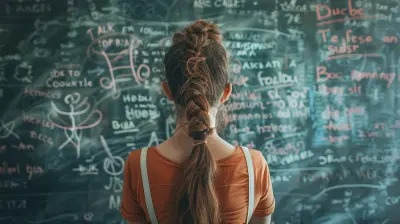Developing Global Competence in Teachers and Students
15 July 2025
Ever looked around and noticed how interconnected the world has become? From international Zoom meetings to cultural exchanges on TikTok, we've gone global — whether we like it or not. And that connectedness isn’t just for businesses or influencers. It's reshaping education too. One buzzword that’s popping up more and more in schools and universities? Global competence.
But what does that actually mean? Better yet, how the heck do we develop it — both in teachers and students?
That’s what we’re diving into today. So, grab a cup of coffee (or tea, we’re internationally inclusive here), and let’s unpack what it takes to prepare educators and learners for the global stage.
What Is Global Competence Anyway?
Let’s start at the beginning. Global competence is the ability to understand and act on issues of global significance. Sounds fancy, right? But in practical terms, it's about being open-minded, culturally aware, and ready to engage with people from all walks of life.It’s not just about knowing where Switzerland is on a map (although that helps!). It’s about understanding global systems, appreciating different perspectives, and communicating across cultures.
Now imagine our kids being equipped with those skills — and our teachers leading the way. That’s a powerful combo!
Why Global Competence Matters More Than Ever
Here’s a quick reality check: we live in a world where a virus that starts in one part of the globe can bring the entire planet to a standstill. Where climate change, refugee crises, and digital misinformation transcend borders. That’s the kind of world our students are growing up in — and they need tools to handle it.And teachers? They’re not just teaching algebra or grammar anymore. They’re shaping citizens of the world. That’s a pretty big job, don’t you think?
So, whether you're an educator, parent, principal, or student yourself — developing global competence is no longer optional. It's essential.
Breaking Down the Four Pillars of Global Competence
According to the OECD (yep, those education experts), global competence has four key components:1. Investigate the world beyond their immediate environment.
2. Recognize and appreciate different perspectives.
3. Communicate ideas effectively with diverse audiences.
4. Take action for collective well-being and sustainable development.
Let’s unpack each one with a bit more personality.
1. Investigate the World
Think of this like putting on a pair of binoculars — kids should be encouraged to zoom out and look beyond their town, their country, even their continent. They need to understand how global systems work: economics, politics, health, environment.It’s not just about memorization, though. It’s about critical thinking. Asking questions. Digging deep. Wondering why some countries are rich while others struggle. Or how social media shapes democracy (or threatens it).
2. Appreciate Perspectives
This one’s all about empathy — the magic ingredient in global competence. Students (and adults, let’s be honest) need to realize that people see the world differently based on their experiences and cultures.Here’s a fun classroom idea: Start a “pen pal project” with students from another country. Watch as stereotypes are shattered and real connections form.
3. Communicate Across Cultures
It's not enough to just "know stuff." You have to be able to express it in ways that make sense across cultural lines. That means choosing words carefully, listening actively, and understanding what might offend someone unintentionally.Think about how emojis mean different things around the world (🔥 might mean “cool” in one place and “danger” in another). Cultural context matters — a lot.
4. Take Action
This is where it all comes together. Once students understand global issues, respect diverse views, and can communicate clearly, they’re ready to do something about it.Starting a local recycling program, organizing a fundraiser for refugee aid, or even just creating a powerful social media campaign — every action counts.
How Teachers Can Build Global Competence
Okay, now that we know what it is, how do we make it happen? Especially for teachers who are already juggling lesson plans, parent meetings, grading, and the occasional fire drill?Here’s a practical roadmap for bringing global competence into the classroom.
1. Start With Self-Reflection
Let’s be real: you can’t teach what you haven’t explored yourself. So the first step for any educator is to ask — how globally competent am I?- Do I consume international news?
- Do I have meaningful interactions with people from other cultures?
- Am I aware of my own cultural biases?
This isn’t about guilt-tripping; it’s about growth. Global competence begins at home — or more specifically, in the mirror.
2. Integrate Global Themes Into the Curriculum
You don’t need a completely new curriculum to promote global awareness. Just tweak what you’ve already got!- Teaching math? Explore statistics on global poverty.
- Literature? Compare storytelling traditions from different cultures.
- Science? Study climate change impacts around the world.
Think of it like adding seasoning to a recipe. A little global flavor goes a long way.
3. Use Technology to Open (Virtual) Doors
Thanks to the internet, your classroom can connect with the world at the click of a button.Try this:
- Host a Skype or Zoom call with a classroom abroad.
- Use Google Earth to go on a virtual field trip.
- Let students create blogs or vlogs around global topics.
When students see people — not just headlines — their empathy becomes real.
4. Create a Safe Space for Dialogue
Talking about global issues can get heavy — and even a little heated. Teachers should aim to create a judgment-free zone where students feel comfortable sharing different opinions.Here’s where classroom rules like “seek to understand before being understood” and “assume positive intent” come into play.
Tips for Helping Students Develop Global Competence
Students don’t magically become globally competent because their teacher read a blog post. It takes intentional, meaningful strategies. Here are a few that really work.1. Encourage Curiosity
Ever had a student ask a million random questions? That’s actually a superpower. Nurture it.Make global issues personal. Ask:
- How would your life change if you had to flee your home?
- What would happen to your community if global temperatures rose by 3°C?
Curiosity is the spark that lights global learning on fire.
2. Promote Language Learning
Language is more than vocabulary — it’s culture, identity, and connection.Encourage students to pick up a new language, even at a basic level. Use language apps or bring in native speakers. You'll be amazed how quickly students open up to new cultures when they know a few key phrases.
3. Facilitate Collaborative Projects
Group work isn’t just for science fairs. Let students work together to tackle real-world problems.For example:
- Design a sustainable city of the future.
- Create a global news roundup for your school.
- Partner with NGOs for service-learning projects.
These projects build teamwork, empathy, and problem-solving — core ingredients of global competence.
4. Celebrate Diversity
Host cultural days in your classroom or school. Share food, music, art, and stories from different countries.When students see diversity as something to celebrate — not something “other” — they're on the right path.
Challenges to Watch Out For (And How to Tackle Them)
Let’s not sugarcoat it: teaching global competence isn’t all sunshine and rainbows. There are real hurdles.1. Resistance to Change
Some communities might push back against “global” content, especially if it's perceived as political or controversial. Tackling this means emphasizing that global competence is about communication, understanding, and shared values — not politics.2. Lack of Resources
Not every classroom has access to tech or funding. But don’t worry — even small actions count.Free tools like YouTube, Google Maps, and international pen pal platforms can work wonders. Get creative!
3. Teacher Burnout
Adding "global educator" to the to-do list can feel overwhelming. That’s why school leaders must support teachers with training, time, and tools.It’s not about doing more — it’s about doing smarter.
Final Thoughts: Global Competence Is a Journey, Not a Destination
Here’s the bottom line: developing global competence isn’t a one-time lesson. It’s a mindset shift. A lifelong journey.The good news? You don’t have to have a Ph.D. in International Diplomacy to get started.
Just be curious. Open-minded. Willing to listen and learn.
Because in a world that’s more interconnected than ever, global competence isn't just a nice-to-have — it's a need-to-have.
So, whether you’re a teacher planting these seeds or a student ready to grow, now’s the time to cultivate understanding, empathy, and action.
The world’s waiting.
all images in this post were generated using AI tools
Category:
Teacher TrainingAuthor:

Anita Harmon
Discussion
rate this article
1 comments
Sasha McClellan
This article highlights a crucial aspect of modern education! How can we effectively measure global competence in both teachers and students? I'm curious about specific strategies or programs that have successfully fostered this skill set. What role does cultural exchange play in this development?
August 18, 2025 at 11:13 AM

Anita Harmon
Thank you for your interest! Effective measurement of global competence can involve project-based assessments, peer evaluations, and reflective practices. Successful programs often include international collaborations and service-learning opportunities. Cultural exchange enriches this development by fostering empathy and understanding among diverse perspectives.


